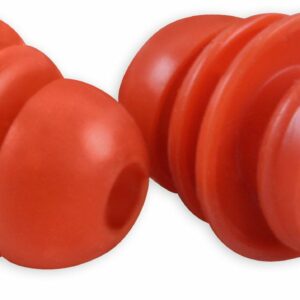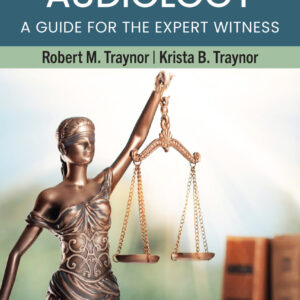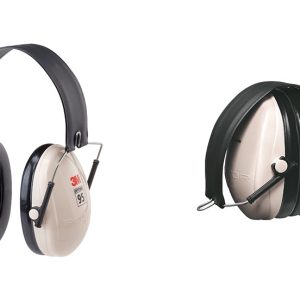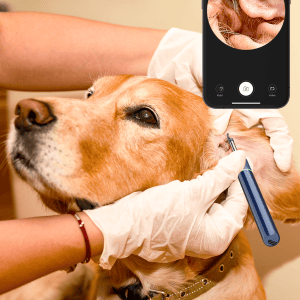Industrial Hearing Protection Programs
Custom Molded Hearing Protection
Learn about the advantages for your workplace here.

-
 E.A.R. Gear BT (Bluetooth) Electronic Earplugs$650.00
E.A.R. Gear BT (Bluetooth) Electronic Earplugs$650.00 -
 EarPlugz-PC® Tapones Para Oídos$45.00 – $450.00
EarPlugz-PC® Tapones Para Oídos$45.00 – $450.00 -
Sale Product on sale
 Minuendo Tapones de Oidos Para Músicos
Minuendo Tapones de Oidos Para Músicos$185.00Original price was: $185.00.$125.00Current price is: $125.00. -
 SHOTHUNT Tapones Electrónicos para Tiro$725.00
SHOTHUNT Tapones Electrónicos para Tiro$725.00 -
Sale Product on sale
 Orejeras Electrónicas Peltor™ - Tactical 500 Bluetooth®
Orejeras Electrónicas Peltor™ - Tactical 500 Bluetooth®$200.00Original price was: $200.00.$187.00Current price is: $187.00. -
 Forensic Audiology - A Guide for the Expert Witness$109.95
Forensic Audiology - A Guide for the Expert Witness$109.95 -
 Peltor/3M H6F/V Optime 95 Earmuff$25.00
Peltor/3M H6F/V Optime 95 Earmuff$25.00 -
 BeBird Note 5 Digital Otoscope and Hearing Screener for Vets and Pet Owners - Product Bundle$163.00
BeBird Note 5 Digital Otoscope and Hearing Screener for Vets and Pet Owners - Product Bundle$163.00 -
Sale Product on sale
 Peltor™ - Tactical 500 Bluetooth® Electronic Ear Muff
Peltor™ - Tactical 500 Bluetooth® Electronic Ear Muff$200.00Original price was: $200.00.$187.00Current price is: $187.00.
Since 1971, E.A.R., Inc. has been providing affordable, high-quality products and services worldwide to the medical, recreational and industrial marketplaces. With repeat performance, we have continually demonstrated a net savings to companies who regularly use disposable-grade hearing protection. Our H.P.P. program can be designed to address multiple concerns such as high noise, radio communications among workers, varying attenuation requirements and ease of maintaining the H.P.P.
We look forward to working with you now and for many years to come!
E.A.R. offers several of the most diverse, self-containing, Hearing Protection Devices (H.P.D.) programs in the world. From very basic designs to highly adaptive custom-fit products, E.A.R. will develop and organize a program around your company needs that is self-sustaining for the long haul.The best ways to begin with E.A.R. is complete our Custom-Fit Group Request Form and let one of our Industrial Product Specialist help you identify your objectives, goals and how we can work with you.
Once we receive the request, one of our Industrial Product Specialist will introduce you to our custom-fit line of industrial hearing protection products, ways to get started in our program, our custom-fit processes and outline the benefits of being part of our Industrial Custom-fit Group Program.
You can also give us a call at Toll-Free (Canada/US) 1.800.525.2690, (International/Local) 1.303.447.2619. Or email us at he**@****nc.com.
 Start With a Small Group
Start With a Small Group
One of the best ways to begin with a small “trial” baseline group. After the initial small group trial period, feedback can be provided about the initial program. This type of program starts out with very little upfront expense and helps a company evaluate and pros and cons before proceeding with roll out for the entire company or facility.
The initial trial period will run 30 days. If during this time anything is brought to our attention, E.A.R. will address the concerns and provide resolution for the employee(s) involved. This could mean changing a product over to help with situational awareness, or addressing a change of job requirements or facility communication abilities. Once all of the company concerns have been addressed, E.A.R. will work with your safety team and advisers to formulate a H.P.P. roll-out plan.
 Jump Right In
Jump Right In
Many of our clients have already integrated our custom H.P.P at a sister facility and therefore can forgo a trial period. This might also hold true with safety advisers who have integrated our H.P.P. throughout their previous company, and therefore may already have product knowledge. With product knowledge the safety adviser may already know which style of hearing protection is necessary to set forth a sustainable H.P.P. plan. In either case, E.A.R. will work with your company to get the right job done!
 Corporate – Prime Vendor Agreements
Corporate – Prime Vendor Agreements
Many larger companies with multiple locations, either domestically and internationally, request to establish corporate agreements, based on workforce size, locations, and employee needs, with locked-in pricing for a predetermined amount of time. All agreements are reviewed independently and are subject to meet the current requirements of the pertaining county(s), safety regulations and conduct codes. If this type of program is of interest to your company and you would like to discuss our corporate and prime vendor agreements, please give us a call 800.526.2690 or contact us.
E.A.R Goal ZERO Initiative
Our Goal ZERO Initiative focuses and factors in all that your company is trying to accomplish, along with new concepts to reduce your company’s overall environmental impact to a community. The Goal ZERO Initiative is broken into four areas: ZERO Waste – Custom-fit earplugs reduce the amount of disposable trash and throw-away earplugs from parking lots, offices, bathrooms and work space environments. Custom-fit allows for a cleaner environment and overall better appearance. Custom-fit also reduces common complaints about site hygiene and broken appliances or machines due to obstructions of disposable H.P.E.s.
- ZERO Fit Issues – Custom-fit earplugs fit the ear like a jigsaw puzzle piece. There are no pressures being exerted to the ear canal walls or exterior parts of the head, such as with ear muffs. The earplugs are worn without fatigue, pain or constant readjustments because of a proper fit.
- ZERO Ongoing Expenses – Safety houses appreciate the constant use of disposables. Purchasing of disposables is on-going which means expenditures are on-going! When implementing a custom-fit H.P.P. solution, you reduce the continual expense of disposable earplugs because one pair of custom earplugs can be used, and reused, for several years.
- ZERO Recordables – Custom-fit earplugs are worn correctly every time, not just part of the time. Every use guarantees a perfect fit and noise reduction. This is especially important to eliminate a threshold shift due to prolonged or sudden noise exposure.
 Breakdown
Breakdown
On average, we see disposable earplugs being sold by safety houses from anywhere between $0.16 per pair to over $1.87 per pair. Of course, this range depends on the style of earplugs being offered which varies from foam, silicone, gel, corded, uncorded, as well as metal-detectable.
We estimate an employee will use 2 – 3 pairs of disposable earplugs per work shift, in addition to what might be taken home for personal use which is often recommended by a company. In closer review, your company is most likely spending anywhere from $0.32 per day to over $3.75 per day per employee! This calculation assumes an average work year of 240 day. With this many work days and pairs of disposable earplugs being used, the cost of employee hearing protection amounts to thousands of dollars every year!
This is where our Industrial H.P.P with custom-fit earplugs for employees provides tremendous cost savings to your company and provides high level hearing protection for your employees. For as low as $0.29 per day, you can have an employee fit with custom earplugs, and with proper care and use, will last for several years.
 Longevity
Longevity
Most industrial companies E.A.R. partners with issue a new pair of custom ear plugs, per employee, every two to four years. This depends on employee use and the industrial setting. What this means is every year a company is continually reducing their bottom line per employee and saving the company thousands of dollars! This is only one reason why so many companies partner with E.A.R., use our products and appreciate the added value of our H.P.P.
 Collaboration – Sustainability
Collaboration – Sustainability
Many companies have in-house industrial nurses or safety managers who are responsible for sustaining the H.P.P. until it is determined that E.A.R. will return to a company for a new round of employee fittings. With this consideration, E.A.R. can work alongside your safety team and give them the necessary skills to fit new-hired individuals, unforeseen requires or replacements as well as personal interest products for your employees. E.A.R. will conduct the training while actively on assignment at your facility and the training will not end until the product knowledge is understood and several practice impressions have been correctly performed. E.A.R. wants to be your hearing protection company starting now and for years to come!
Over the years, our silicones and custom earplugs have been used by professionals in the industrial, medical and recreational sector that know the need for reliable and effective hearing protection in extreme noisy environments. With the continued focus on comfortable and effective Hearing Protection Earplugs (H.P.Es), our custom-fit solutions have proven to be advantageous from many angles including reliability, functionality, hygienic value, as well as cost!
But even more important is the fact that custom hearing protection will help reduce recordable employee hearing loss injuries.
